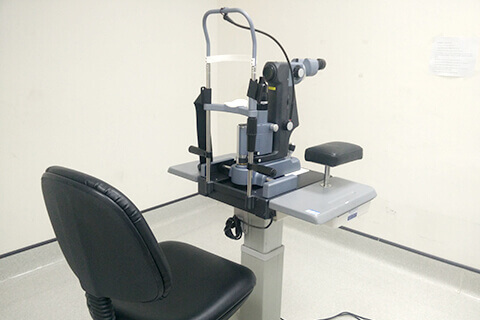YAG Laser Treatments
The Yag (yttrium-aluminum-garnet) laser is used in the eye clinic to treat secondary cataracts and to treat narrow angles with a peripheral iridotomy.
Yag Capsulotomy: Secondary Cataract Treatment

About one in five people who have cataract surgery will develop a film or scar behind the lens implant that can affect vision. This is often called a secondary cataract or posterior capsular fibrosis and can happen within a few months of cataract surgery or even years later. For people who are noticing that their vision is getting cloudy again following cataract surgery, a possible cause can be a secondary cataract. In these cases the Yag laser is used in the clinic to break through the cloudy film and create a clear opening behind the lens implant in order to restore vision. This treatment is a low risk and takes a few minutes in the office. In order to know if a return of blurry vision following cataract surgery can be treated by a Yag laser capsulotomy, a dilated eye health examination will be done with your ophthalmologist or optometrist. Although complications from Yag laser capsulotomy are rare, the potential risks and benefits of treatment will be discussed with you during your examination if laser treatment is recommended.
Yag PI: Peripheral Iridotomy for Treatment of Narrow Angles
A small percentage of people have a narrow angle between the iris (the colored part of the eye) and the cornea (the clear windshield-like front of the eye). The drainage structures located in the angle can be blocked in cases of angle closure, which is more likely to happen in people with narrow angles. During an acute angle closure attack the pressure in the eye can quickly spike up to three or four times the normal pressure which can immediately damage the eye. Most people with angle closure will have significant pain and blurred vision, which will lead them to seekemergency treatment. In these cases, a Yag peripheral iridotomy or Yag PI is done as an emergency procedure along with a treatment of eye drops and oral medications to reduce the pressure as quickly as possible to limit permanent vision loss.
For people who are identified as having narrow angles but who have not had an angle closure attack there will be no symptoms. An ophthalmologist or an optometrist will identify a narrow angle during a routine eye examination to provide a diagnosis. In order to prevent people with narrow angles from having an angle closure attack the Yag laser can be used to create a hole in the iris as a preventative treatment to provide alternative circulation for the fluid within the eye. This is called a prophylactic Yag peripheral iridotomy or prophylactic Yag PI. If you have narrow angles the potential benefits and risks of prophylactic Yag PI will be discussed with you during your examination.
